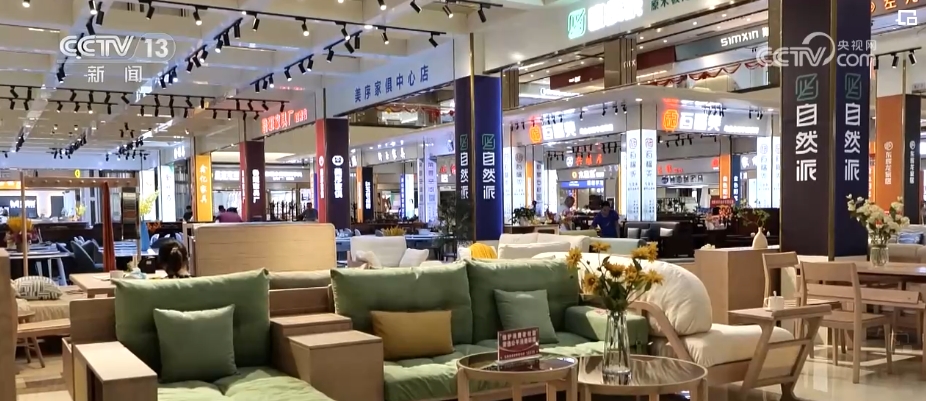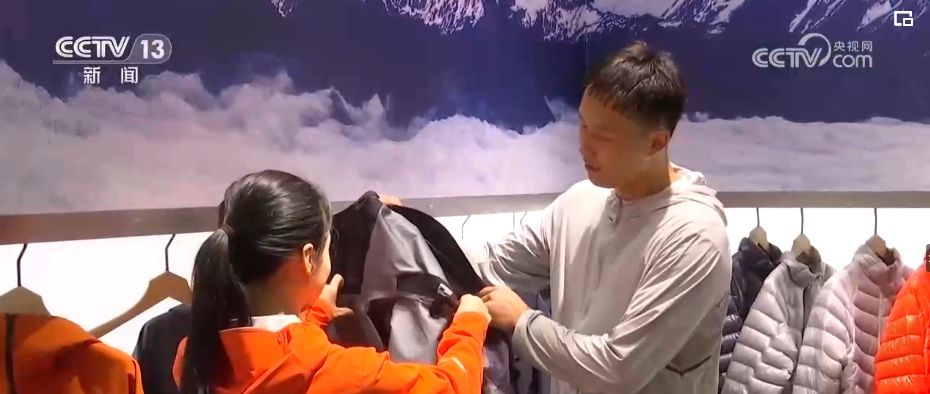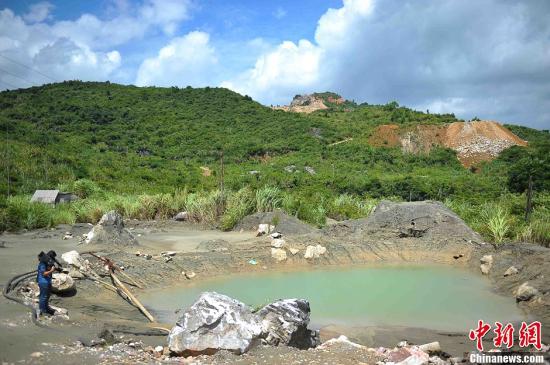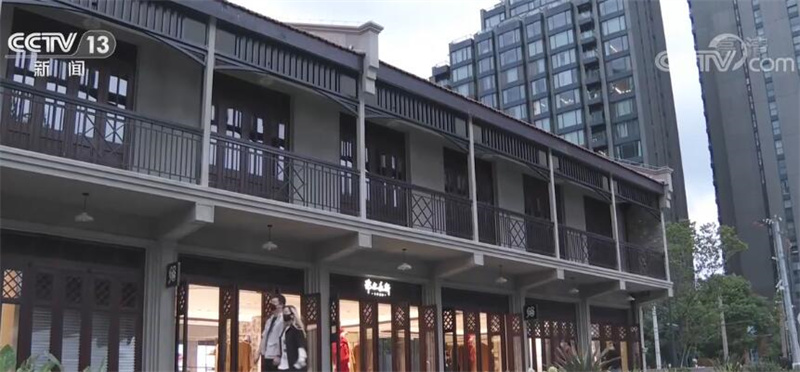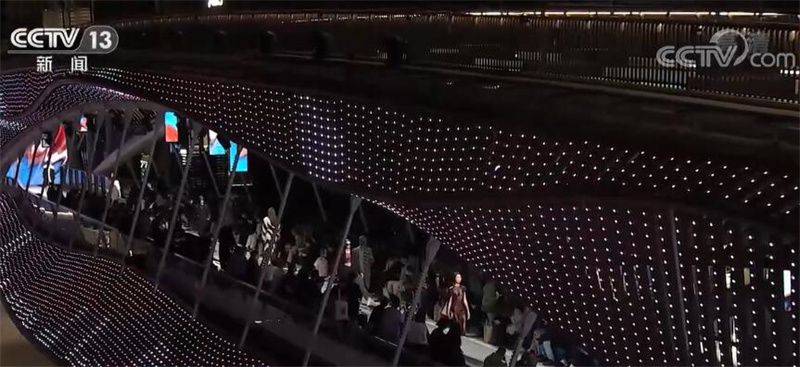The Central Committee of the Communist Party of China’s Resolution on the Great Achievements and Historical Experience of the Party’s Hundred Years’ Struggle (hereinafter referred to as the Resolution) adopted by the Sixth Plenary Session of the 19th CPC Central Committee pointed out: "Mao Zedong Thought is Marxism–Leninism’s creative application and development in China, a correct theoretical principle and experience summary about China’s revolution and construction that has been proved by practice, and the first historic leap of China Marxism." This is a scientific summary and summary of Mao Zedong Thought. Seriously studying and implementing the spirit of the Resolution is of great theoretical and practical significance for continuing to hold high the great banner of Mao Zedong Thought and constantly pushing forward the China-oriented Marxism under the new historical conditions.
First, the scientific theory formed and developed in China’s revolution and construction practice.
The revolution in semi-colonial and semi-feudal China is confronted with the special national conditions that peasants account for the vast majority of the population, the backward and scattered small-scale peasant economy, small-scale production and its social influence are deeply rooted, and the economy and culture are very backward. What kind of road to choose to lead the China revolution to victory is the primary problem and an unprecedented problem in the history of Marxist development. Young the Communist Party of China (CPC) once simply applied Marxism–Leninism’s general principles about proletarian revolution and copied the experience of armed uprising in Russian October revolutionary cities, which made the China revolution suffer serious setbacks.
In the arduous exploration of the whole party to find the revolutionary road in China, Comrade Mao Zedong led the autumn harvest uprising troops to change from attacking big cities to marching into the countryside, which was a decisive new starting point for the China revolution. In the practice of revolutionary struggle, Comrade Mao Zedong scientifically analyzed the international and domestic political situation, systematically answered the problems why the red regime in China existed, expounded the theory of the trinity of agrarian revolution, armed struggle and the construction of revolutionary base areas, and put forward that the China revolution should be centered on the countryside, which opened up the correct revolutionary road. The Resolution pointed out: "the Communist Party of China (CPC) people, with Comrade Mao Zedong as the main representative, combined Marxism–Leninism’s basic principles with China’s concrete reality, made a theoretical summary of a series of original experiences accumulated through hard exploration and great sacrifice, opened up the correct revolutionary road of encircling cities from rural areas and seizing political power by armed forces, founded Mao Zedong Thought, and pointed out the correct direction for winning the victory of the new-democratic revolution."
The cause of Marxism in China is arduous and complicated, and it has never been smooth sailing. The process of Mao Zedong Thought’s formation and development runs through the process of fighting against "Left" and Right-leaning mistakes and profoundly summing up the historical experience in this respect. The Zunyi Conference held in 1935 actually established the leading position of Comrade Mao Zedong in the CPC Central Committee and the Red Army, and began to establish the leading position of the correct Marxist line with Comrade Mao Zedong as the main representative in the CPC Central Committee, which created important conditions for Mao Zedong Thought to mature. In October 1938, Comrade Mao Zedong clearly put forward the proposition of "China Marxism" at the Sixth Plenary Session of the Sixth Central Committee of the enlarged Party. At the turn of 1939 and 1940, in order to systematically clarify the Party’s theory and program, answer the question of where China is going, and better guide the revolutions in War of Resistance against Japanese Aggression and China, Comrade Mao Zedong published many important theoretical works, profoundly summarized and comprehensively expounded a series of major theoretical issues of the China Revolution, and formed a relatively systematic philosophy, military thinking, United front thinking and party building thinking. In particular, the systematic exposition of the theory of new democracy and the incisive demonstration of the Party’s policies and strategies are of great significance to guiding the China revolution. The creation of these theories marks the maturity of Mao Zedong Thought. The Seventh National Congress of the Communist Party of China established Mao Zedong Thought as the party’s guiding ideology and wrote it into party constitution. Under the guidance of Mao Zedong Thought, the Party United and led the people to create great achievements in the new-democratic revolution, and realized the national independence and people’s liberation that several generations of Chinese dreamed of.It has created fundamental social conditions for realizing the great rejuvenation of the Chinese nation.
After the founding of New China, faced with the basic end of the new democratic revolution and the beginning of the socialist revolution, Comrade Mao Zedong further put forward and expounded the theory, principles and policies of the transition from new democracy to socialism, led the whole party and the people of the whole country to creatively open up a socialist transformation road suitable for China’s characteristics, successfully completed the task of the socialist revolution, and established the socialist system, laying an important foundation for all progress and development in China.
After the establishment of the basic socialist system, how to build socialism in China is a brand-new task facing the Party. Comrade Mao Zedong has made arduous explorations on the road of socialist construction suitable for the situation in China. The Resolution pointed out: "Comrade Mao Zedong proposed to’ second combine’ Marxism–Leninism’s basic principles with China’s concrete reality, and the Communist Party of China (CPC) people, with Comrade Mao Zedong as the main representative, combined with the new reality to enrich and develop Mao Zedong Thought." In April, 1956, Comrade Mao Zedong made a speech on "On Ten Major Relations" at the enlarged meeting in the Political Bureau of the Central Committee, and initially put forward some new policies for China’s socialist economic and political construction, which indicated that our party had its own new and important understanding of how to build socialism. During this period, the party also put forward a series of important ideas on socialist construction, many of which are still of great guiding significance. It is also under the guidance of Mao Zedong Thought that the Party united and led the people to create great achievements in socialist revolution and construction, laying a fundamental political premise and institutional foundation for realizing the great rejuvenation of the Chinese nation.
Second, enrich and develop Marxism–Leninism with original theoretical achievements.
The Resolution pointed out: "Upholding and developing Marxism requires extremely arduous and challenging efforts by Marxists all over the world from theory to practice." Comrade Mao Zedong is a great pioneer of Marxism in China, and Mao Zedong Thought has added new contents to Marxism–Leninism’s theoretical treasure house with his original theoretical achievements.
Starting from the historical and social conditions in China, Comrade Mao Zedong deeply studied the characteristics of the China Revolution and the laws of the China Revolution, developed Marxism–Leninism’s thought on the leadership of the proletariat in the democratic revolution, and established the theory of a new-democratic revolution led by the proletariat, based on the alliance of workers and peasants, for the masses, and against imperialism, feudalism and bureaucratic capitalism, which provided a basic basis for our party to become the core of the leadership of the whole nation and create a new road of the China Revolution.
Comrade Mao Zedong and the Communist Party of China (CPC), based on the economic and political conditions for the transition to socialism created by the victory of the new-democratic revolution, adopted the policy of simultaneous socialist industrialization and socialist transformation, and implemented the specific policy of gradually transforming the private ownership of the means of production, thus theoretically and practically solving the difficult task of establishing a socialist system in China, a big country with nearly a quarter of the world’s population and backward economy and culture. During this period, the theory of people’s democratic dictatorship put forward by Comrade Mao Zedong greatly enriched Marxism–Leninism’s theory of proletarian dictatorship.
After the establishment of the socialist system, Comrade Mao Zedong creatively put forward that the socialist society is a long historical stage, strictly distinguish and correctly handle the contradictions between the enemy and ourselves and among the people, correctly handle the ten major relations in China’s socialist construction, embark on an industrialization road suitable for China’s national conditions, respect the law of value, implement the policy of "long-term coexistence and mutual supervision" in the relationship between the party and the democratic parties, and implement the policy of "letting a hundred flowers blossom and a hundred schools of thought contend" in scientific and cultural work.
In the practice of revolution and construction, Comrade Mao Zedong systematically solved the problem of how to build a revolutionary army with farmers as the main component into a new type of people’s army with proletarian nature, strict discipline and close ties with the people. The people’s war thought put forward systematically by Comrade Mao Zedong, and the thoughts on strengthening national defense, building modern revolutionary armed forces and developing modern national defense technology are all outstanding contributions to Marxist-Leninist military theory.
Comrade Mao Zedong brilliantly demonstrated the extreme importance of policies and strategies, pointing out that policies and strategies are the life of the Party and the starting point and destination of all practical actions of revolutionary parties. We must formulate the Party’s policies according to the political situation, class relations, actual conditions and their changes, and combine principle with flexibility. Comrade Mao Zedong also put forward many important ideas with long-term significance in ideological and political work and cultural work.
It is an extremely arduous task to build a Marxist proletarian party with broad masses in a country with a small number of proletarians and strong fighting capacity, and farmers and other petty bourgeoisie account for the majority of the population. Comrade Mao Zedong’s theory of party building successfully solved this problem. Comrade Mao Zedong clearly pointed out that there must be a great party to guide the great revolution, and party building is a "great project". He put forward the principle of building the party ideologically, adhering to democratic centralism, adhering to the three fine styles of integrating theory with practice, closely contacting the masses, criticizing and self-criticizing, and forming three magic weapons of United front, armed struggle and party building. Fully foresee the new challenges facing the country’s ruling, clearly put forward that we must continue to maintain the style of modesty, prudence, arrogance and rashness, and we must continue to maintain the style of hard struggle and actively explore major issues of party building under the ruling conditions. Many of these important expositions still have strong practical pertinence, which is an important ideological weapon for our party to strengthen the construction of the ruling party.
The "Resolution" points out: "Mao Zedong Thought’s living soul is the position, viewpoint and method that runs through all components, which are embodied in three basic aspects: seeking truth from facts, mass line and independence." Comrade Mao Zedong applied dialectical materialism and historical materialism to all the work of proletarian political parties, and formed these positions, viewpoints and methods with the Communist Party of China (CPC) characteristics in the long and arduous struggle of China’s revolution and construction, which had a far-reaching impact on our party’s theoretical innovation and practical innovation.
In the process of the formation and development of Mao Zedong Thought, many outstanding leaders of our party have made important contributions. Mao Zedong Thought is the crystallization of the Communist Party of China (CPC)’s collective wisdom. Mao Zedong’s scientific works are its concentrated summary.
Third, inherit the excellent traditional culture
"Resolution" pointed out that Marxist theory "must be China to take root and localization to be deeply rooted in people’s hearts". Mao Zedong Thought was created by "applying Marxism–Leninism’s scientific method to summarize China’s history, society and all revolutionary struggle experiences", "the highest expression and theoretical generalization of China’s national wisdom", "completely Marxist and completely China’s", with "fresh and lively China style and China style loved by China people".
In the development of Marxism in China, the history of the nation and the present situation, the form and the content of the nation have always been inseparable, and Comrade Mao Zedong has always advocated the close combination of the two. Comrade Mao Zedong once pointed out against the error of "Left" dogmatism: "No matter the history of China in the past hundred years or in ancient times, it is still dark in the minds of many party member. Many scholars in Marxism–Leninism also said that they were Greek, but they were sorry for their ancestors and forgot. The air of seriously studying the status quo is not strong, and the air of seriously studying history is not strong. " Rectifying the style of study in Yan ‘an Rectification Movement is to emphasize the study of China’s realistic struggle, as well as the modern and ancient history of China, inherit the excellent traditional culture and create a Marxist national form.
Comrade Mao Zedong pointed out that the culture of China for thousands of years is mainly feudal culture, so we must make a concrete analysis of it. There are many good things left by China’s history, but there are also many toxins and dross, which cannot be uncritically eclectic. "From Confucius to Sun Yat-sen, we should sum up", but "we must distinguish all the decadent things of the ancient feudal ruling class from the excellent people’s culture in ancient times, that is, something more or less democratic and revolutionary". It is a necessary condition for developing national new culture and improving national self-confidence to get rid of its feudal dross and absorb its democratic essence. The "national scientific mass culture" put forward and advocated by Comrade Mao Zedong is the "new culture of the Chinese nation" that "enhances national self-confidence".
The "national" culture is to oppose imperialist oppression and uphold the dignity and independence of the Chinese nation. It belongs to our nation and has the characteristics of our nation. The Communist Party of China (CPC) people must combine Marxism with national characteristics, and only after a certain national form can it be useful, and it must never be applied subjectively. A "scientific" culture opposes all feudal and superstitious ideas, advocates seeking truth from facts, advocates objective truth, and advocates the consistency of theory and practice. "The current new culture in China is also developed from the ancient old culture. Therefore, we must respect our own history and never cut it off." The "popular" culture is democratic, should serve the broad masses of workers and peasants, and gradually become their culture. As for China’s fine historical tradition, "we want to inherit it, but the purpose is still for the people", and as for the historical and cultural forms of the past era, "we don’t refuse to use them, but these old forms have been transformed and added with new contents, which will become revolutionary things serving the people".
Comrade Mao Zedong paid attention to combining the basic principles of Marxism with Chinese excellent traditional culture, so that Marxism could take root in China.
Fourth, adhere to and develop Mao Zedong Thought.
General Secretary of the Supreme Leader pointed out: Mao Zedong Thought has educated generations of the Communist Party of China (CPC) people, and it has trained a large number of backbones, which not only played an important role in the new democratic revolution, socialist revolution and socialist construction, but also played an important role in creating and building Socialism with Chinese characteristics in the new historical period. Many of Comrade Mao Zedong’s important works were written during the period of the new-democratic revolution and the period of socialist revolution and construction, but we still have to study them frequently. This is not only because history cannot be cut off, but if we don’t understand the past, it will hinder our understanding of current problems; And because many basic principles, principles and scientific methods contained in these works are of universal significance, they will play an important guiding role for us now and in the future. The Resolution pointed out that Mao Zedong Thought "provided scientific guidance for the development of the cause of the Party and the people". We must continue to adhere to Mao Zedong Thought, earnestly study and apply its stand, viewpoint and method to study new situations and solve new problems in practice. Comrade Deng Xiaoping pointed out: "We want to restore Mao Zedong Thought, adhere to Mao Zedong Thought and even develop Mao Zedong Thought. In these aspects, he has provided a foundation." It is in this sense that Mao Zedong Thought provided an important ideological foundation for the theoretical creation of our party.
Comrade Mao Zedong said in "On Practice": "The movement of change in the objective real world will never end, and people’s understanding of truth in practice will never end. Marxism–Leninism did not end the truth, but constantly opened up the road to understanding the truth in practice. " Just as Marx must never be asked to provide ready-made answers to the problems that arose hundreds of years after his death, Comrade Mao Zedong must never be asked to undertake the task of solving a series of new problems that occurred in China and the world after his death. Real Marxism–Leninism people must know, inherit and develop Marxism–Leninism and Mao Zedong Thought according to the present situation. Comrade Mao Zedong pointed out that he is not a Marxist as Marx; Equal to Marx, not a Marxist; Only when you surpass Marx can you be a Marxist.
Since the Third Plenary Session of the Eleventh Central Committee of the Party, our Party has persisted in proceeding from the reality of China, gained insight into the general trend of the times, grasped the historical initiative, made arduous explorations, constantly pushed forward the modernization of Marxism in China, guided the people of China to continuously push forward the great social revolution, successively founded Deng Xiaoping Theory, formed Theory of Three Represents and formed Scientific Outlook on Development, scientifically answered a series of basic questions about the construction of Socialism with Chinese characteristics, formed a theoretical system of Socialism with Chinese characteristics, and achieved a new leap in the sinicization of Marxism.
Since the 18th National Congress of the Communist Party of China, the people of the Communist Party of China (CPC), with the Supreme Leader as the main representative, have persisted in combining the basic principles of Marxism with the concrete reality of China and the excellent traditional Chinese culture, persisted in Mao Zedong Thought, Deng Xiaoping Theory, Theory of Three Represents and Scientific Outlook on Development, profoundly summed up and made full use of the historical experience since the founding of the Party, and set out from the new reality, created Socialism with Chinese characteristics Thought of the Supreme Leader in a new era. This thought is contemporary China Marxism and 21st century Marxism, and it is the essence of Chinese culture and China spirit, and it has achieved a new leap of Marxism in China.
The people of the Communist Party of China (CPC) and China cherish all the achievements in China’s revolution, construction, reform and Socialism with Chinese characteristics’s great practice in the new era, combining Marxism–Leninism’s basic principles with China’s concrete reality and with China’s excellent traditional culture, and apply and develop these achievements in new practice, enriching and developing our party’s theory with new principles and conclusions that are in line with reality, and ensuring that our cause is in Marxism–Leninism, Mao Zedong Thought, Deng Xiaoping Theory, the important thought of "Three Represents", the scientific development concept and the new supreme leader.
